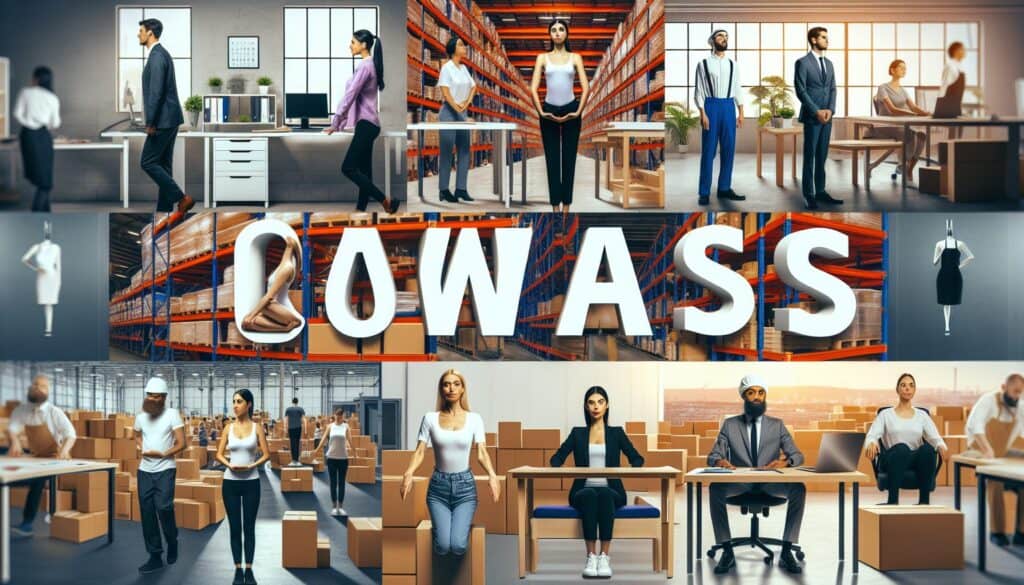Un metodo osservazionale per identificare e valutare le posture di lavoro scorrette.
- Metodologie: Ingegneria, Qualità
OWAS (Sistema di analisi della postura di lavoro Ovako)

OWAS (Sistema di analisi della postura di lavoro Ovako)
- Miglioramento continuo, Azione correttiva, Progettazione per la sostenibilità, Ergonomia, Fattori umani, Human-Centered Design, Miglioramento dei processi, Gestione del rischio, Sicurezza
Obiettivo:
Come si usa:
- Classifica le posture di schiena, braccia e gambe e il peso del carico movimentato. A ogni combinazione di posture viene assegnato un codice che indica il livello di rischio di DMS e la necessità di azioni correttive.
Professionisti
- Semplice e veloce da apprendere e utilizzare; fornisce un chiaro sistema di categorie di azione; è adatto all'analisi di vari tipi di lavoro.
Contro
- Meno dettagliato di altri metodi di analisi posturale; si concentra principalmente sulla postura e sul carico, meno sulla ripetizione o sulla durata; è necessario garantire l'affidabilità inter-osservatore.
Categorie:
- Ergonomia
Ideale per:
- Identificare e valutare le posture di lavoro dannose per dare priorità agli interventi ergonomici.
The Ovako Working Posture Analysis System (OWAS) is particularly beneficial in manufacturing, construction, healthcare, and logistics industries where workers frequently perform physically demanding tasks. The methodology can be applied during the design phase of workplaces or tasks, allowing continuous evaluation to adapt working environments and reduce the potential risks of musculoskeletal disorders (MSDs). Implementation typically involves a collaborative effort between ergonomists, safety officers, and managers, who identify and assess specific job tasks that may contribute to poor posture and associated health risks. By categorizing postures into actionable codes, OWAS facilitates straightforward communication of risk levels, enabling teams to prioritize interventions effectively. This function makes it well-suited for job hazard analyses, regular safety audits, and employee training programs, ensuring that ergonomics become an integral part of workplace safety culture. Training sessions can be structured to quickly educate workers on proper lifting techniques and body mechanics that align with OWAS findings. Companies utilizing this tool can also benefit from improved employee satisfaction and decreased absenteeism due to healthier work practices, reinforcing a commitment to occupational safety and workforce well-being.
Fasi chiave di questa metodologia
- Identify the work task and understand the context in which it is performed.
- Classify the postures of the back, arms, and legs based on predefined OWAS codes.
- Assess the weight of the load handled during the task and note any relevant details.
- Combine the posture codes for back, arms, and legs along with the load weight to determine the overall risk level.
- Refer to the action category system to evaluate the need for corrective actions based on the assigned risk level.
Suggerimenti per i professionisti
- Regularly update your OWAS database to include emerging postural patterns and load handling scenarios specific to your industry.
- Implement cross-functional training for team members on using OWAS effectively, ensuring consistent assessments across departments.
- Utilize OWAS data to drive continuous improvement initiatives, focusing on trends over time to evaluate the efficacy of ergonomic interventions.
Leggere e confrontare diverse metodologie, raccomandiamo il
> Ampio archivio di metodologie <
insieme ad altre 400 metodologie.
I vostri commenti su questa metodologia o ulteriori informazioni sono benvenuti su sezione commenti qui sotto ↓ , così come tutte le idee o i link relativi all'ingegneria.
Contesto storico
1986
(se la data non è nota o non è rilevante, ad esempio "meccanica dei fluidi", viene fornita una stima approssimativa della sua notevole comparsa)

Post correlati
Programma di produzione principale (MPS)
Personalizzazione di massa
Imbuto di marketing
Audit di marketing
Indice MAPO (Movimento e assistenza dei pazienti in ospedale)
Pianificazione delle risorse di produzione (MRP II)